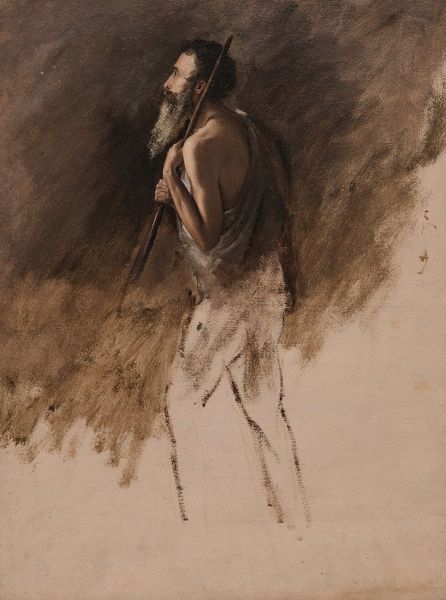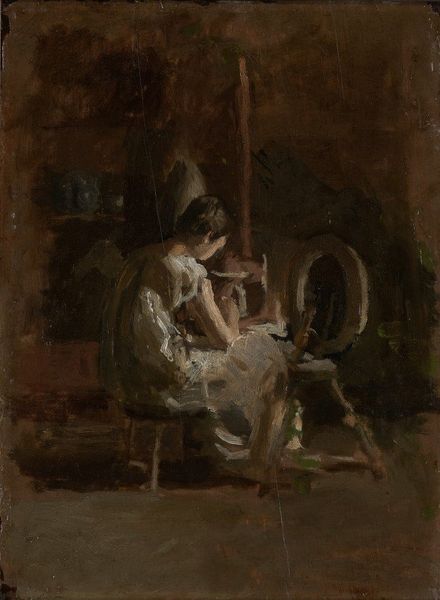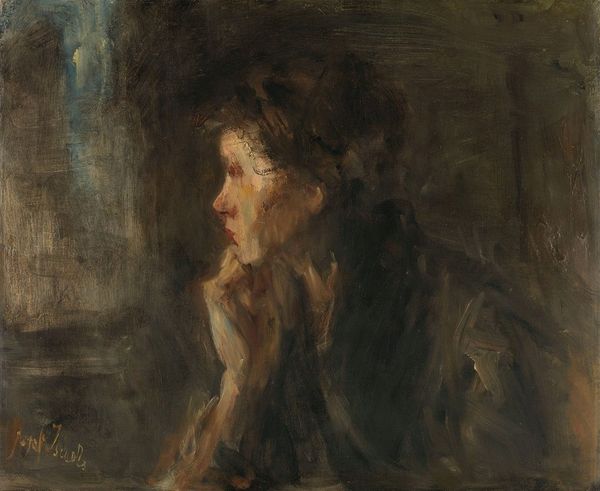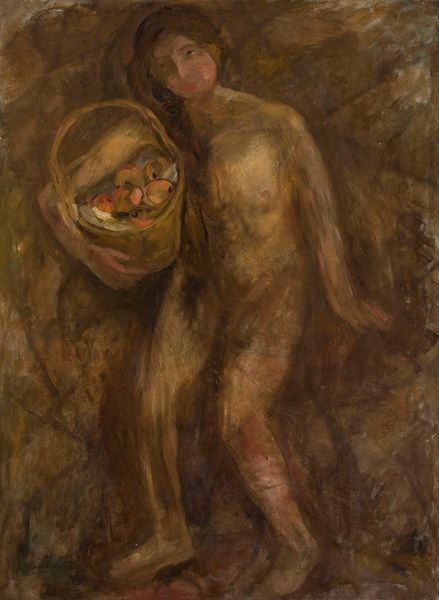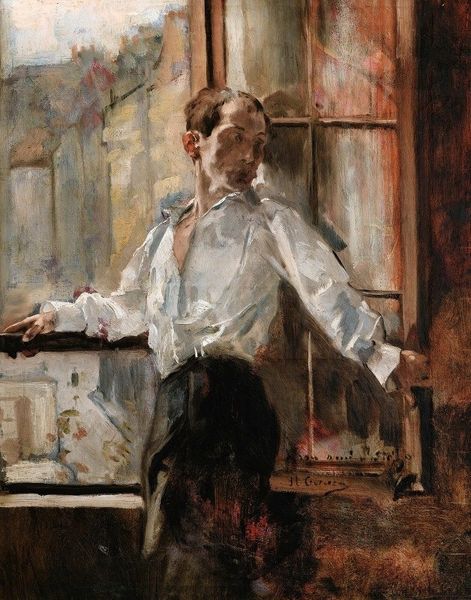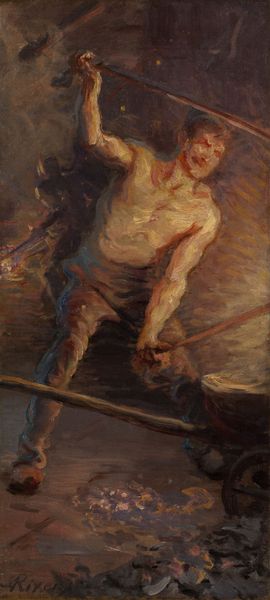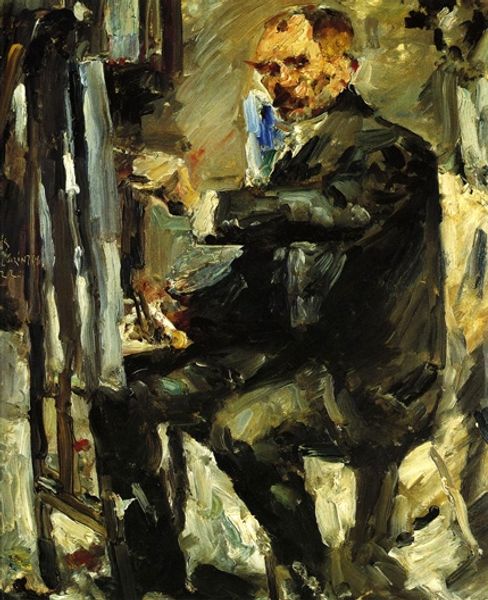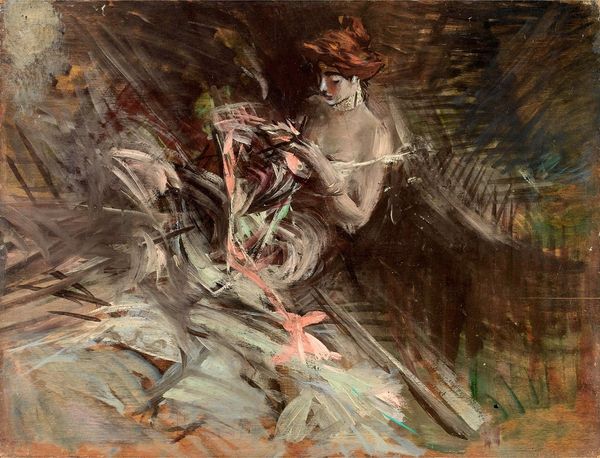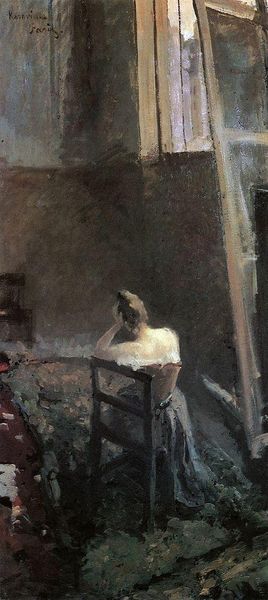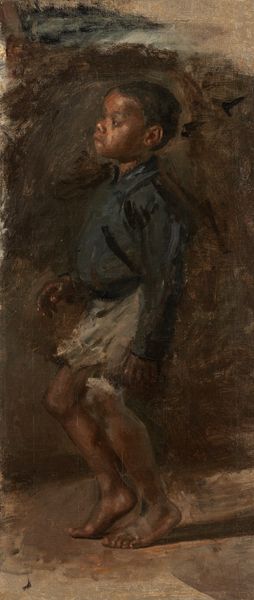
Copyright: Public Domain: Artvee
Editor: Here we have Jozef Israëls’ “David,” created in 1899 using oil paint. There’s something melancholic about it. The colors are muted, and David seems lost in his music. What do you see in this piece? Curator: The immediate feeling of melancholy you describe speaks to Israëls’ intention. The muted tones you noted act almost as a filter, placing David, the celebrated king, within a context of introspection. Notice the way his body is positioned; slumped, almost burdened. Doesn't that strike you as curious? Editor: It does! It’s not how I picture King David at all. He’s usually depicted as strong and triumphant. Curator: Exactly. That is the symbolic tension Israëls plays upon. The harp itself, historically associated with King David's psalms, evokes ideas of repentance and divine communication. The shadowy, undefined background further isolates him, amplifying that emotional vulnerability. Israëls seems to use David's iconography to explore the weight of leadership and spiritual longing. Editor: So, he's using these recognizable symbols to tell a different story about David than we’re used to. The usual symbols are turned upside down. Curator: Precisely! He’s not negating David's iconic status; rather, Israëls uses it to delve into a more complex understanding of the human condition: power, faith, doubt. Doesn't the application of paint too, appear to underscore these ideas? Editor: Yes, the visible brushstrokes and almost unfinished quality contribute to that feeling of vulnerability. Thank you for pointing out those deeper symbolic connections. It gives me a whole new appreciation for the painting! Curator: My pleasure. Art reveals our shared human journey through such potent visual reminders.
Comments
No comments
Be the first to comment and join the conversation on the ultimate creative platform.
